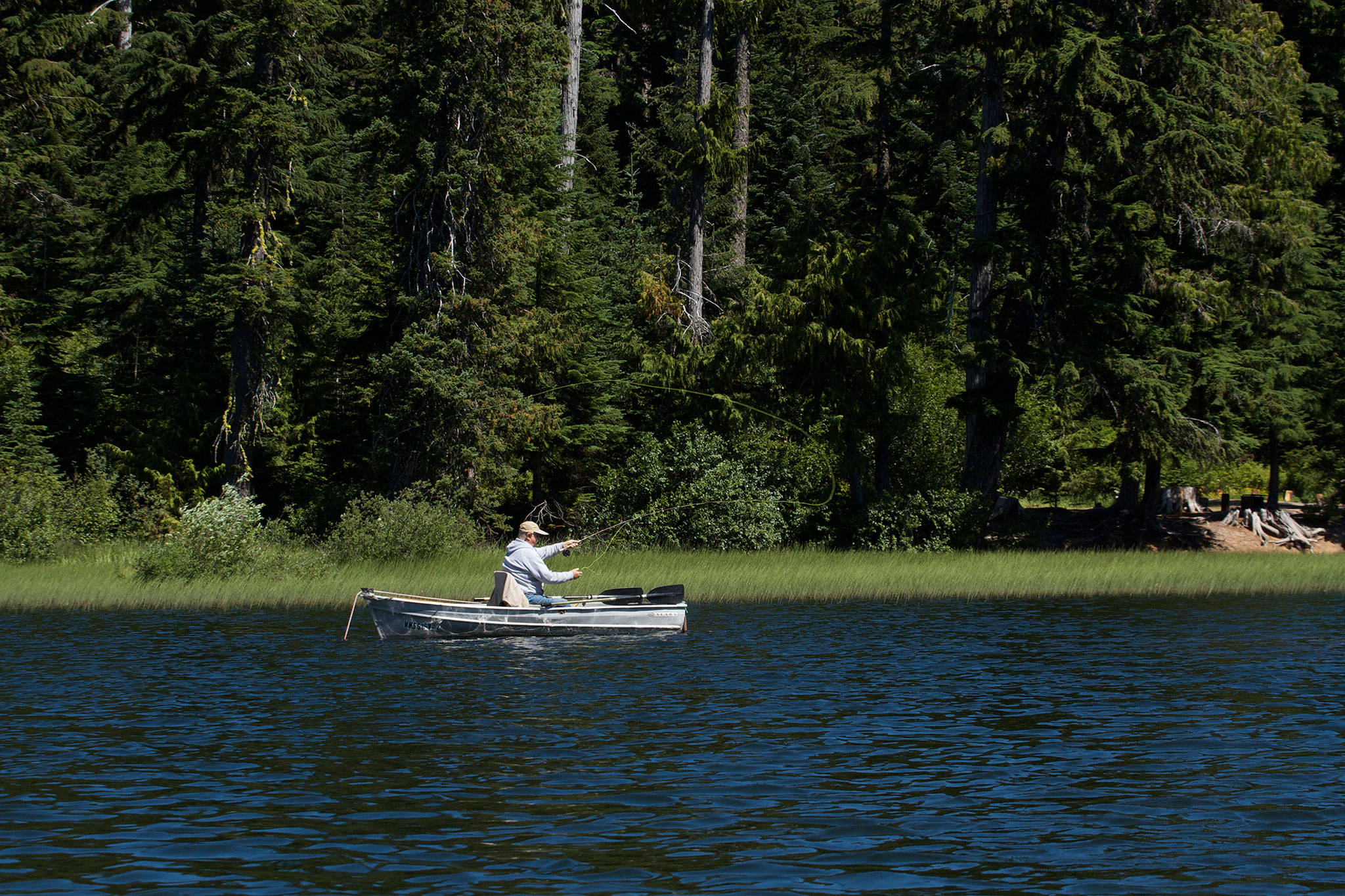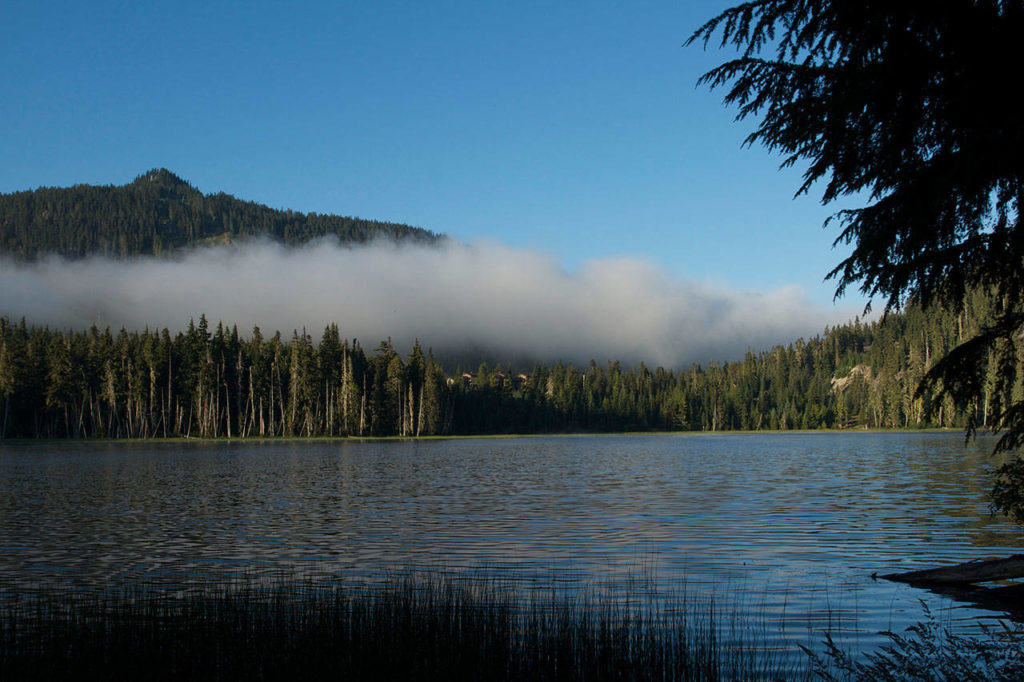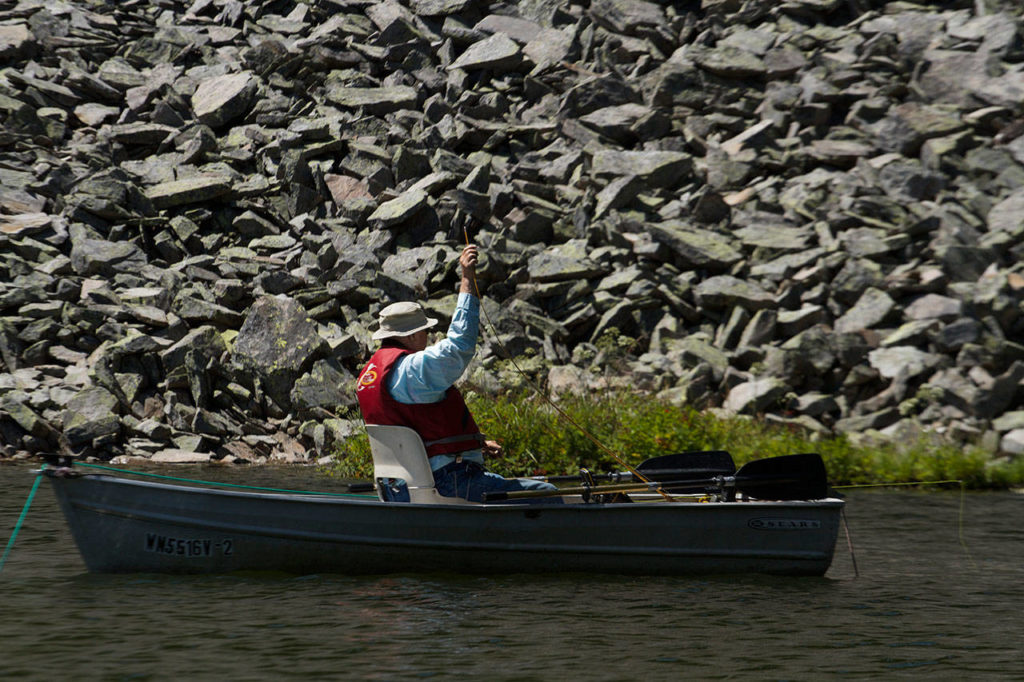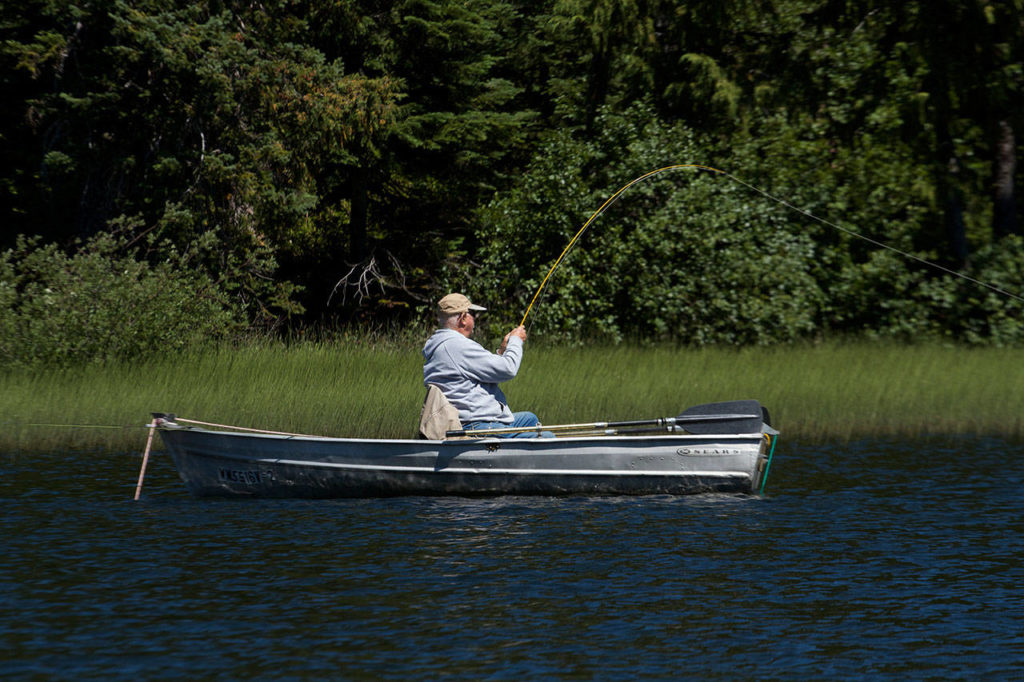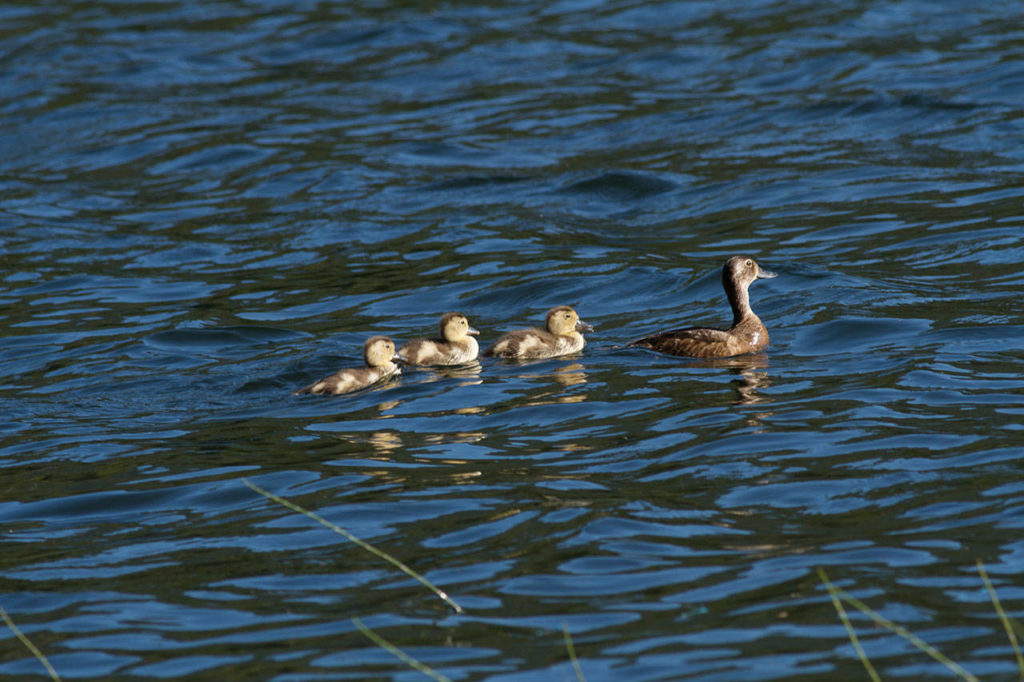By Mike Benbow / Special to The Herald
WHITE PASS — The heat waves in Western Washington this summer have done more than take their toll on the many residents without air conditioning.
They’ve made things tough on the trout, too.
We don’t like hot air and they don’t like hot water. It sends them to the depths, where the water is cooler. It also makes them less active.
I generally quit fishing my favorite lakes when the surface temperature hits 70 degrees. Catching fish is tougher then and the higher temperatures make it tougher for the fish you release to recover.
But that doesn’t mean you have to stop fishing lakes in the dog days of summer.
Washington residents are fortunate to have a good number of high mountain lakes with plenty of cool, clean water. Some involve serious hikes. Others can be reached with little more than a brisk walk.
Then there’s Leech and Dog lakes.
Located at White Pass, a stone’s throw from Highway 12, Leech is a 40-acre gem of a lake that involves no hiking at all. It’s a little far for a one-day trip, but the lake has several primitive campsites right on the shoreline and is worth spending a few days.
I recently took a four-day trip to Leech with retired Everett teacher Pat O’Neil. The fishing wasn’t that great, but we each caught a few. And the scenery was unbeatable.
Leech is a fly-fishing-only lake, but those who don’t fly fish can find a very similar fishing experience a half mile further east at 60-acre Dog Lake.
Both lakes are on the north side of Highway 12 just off the road and east of the White Pass Ski Area. Leech is in the Gifford Pinchot National Forest and Dog is in the Wenatchee National Forest.
Both have a few primitive campsites, but Dog’s are near the lake, not on it. Both lakes have primitive boat launches. And both lakes have reproducing brook trout and hatchery rainbow trout that are planted each year.
Leech is a little unique in that it’s quite shallow, with large feeding areas covered with reeds. The state plants several hundred “jumbo” rainbow trout each year. The jumbos average around 14 inches in length and grow quickly to 16 or 17 inches.
Most of them are fished out each year or don’t survive in the shallow lake through the winter.
The brook trout are from 8 to 10 inches with some surviving through the winter and growing to 15 inches or so.
Anglers can keep five fish a day, but only one can be 14 inches or longer.
When we fished the lake in early August, most of the rainbow trout were no longer in the lake. O’Neil hooked a couple on leech patterns, but I caught just a handful of brook trout fishing damselfly and mayfly nymphs in the morning and Parachute Adams dry flies in in the afternoon.
Leech Lake had a steady wind each day, and fishing dry flies in the reeds and along the shoreline was really the most fun. The areas I fished seemed to be filled with small brook trout. I could never figure out exactly what they were eating because there didn’t seem to be much of an insect hatch.
But if you threw a Size 12 Parachute Adams near a fish that had just sipped on something on the surface, you frequently hooked up with a brookie.
Some of the regular anglers told us the lake fishes very well in June after the rainbows are planted until about mid-July or so. So it looks like we missed the peak time for both the numbers of fish and the regular insect hatches.
If I return to Leech or Dog lakes again — and I’m sure I will — I will go earlier and stay longer.
The White Pass area, around 4,200 feet in elevation, was in the 70s on days when it was in the 80s and 90s at home. And it has more to do than just fishing. It has a slew of hiking trails, including one that hooks up with a stretch of the Pacific Crest Trail.
Talk to us
> Give us your news tips.
> Send us a letter to the editor.
> More Herald contact information.
